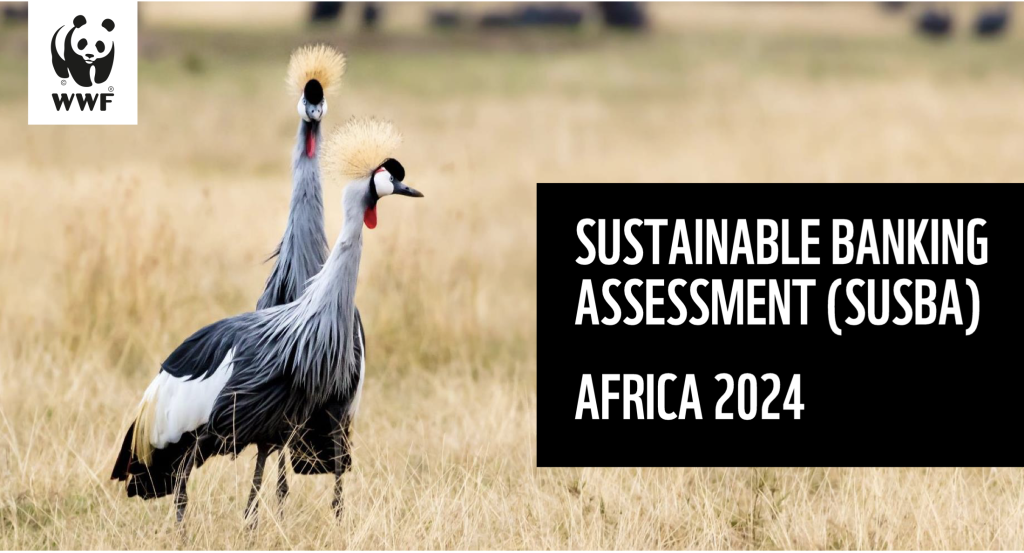– Banks in South Africa and Kenya score an average of 50.1% and 43.7%, respectively, on ESG integration. Banks in Tanzania, Namibia, and Zambia score an average of 37.7%, 21.1%, and 19.3%, respectively.
– Banks in Gabon, Cameroon, and the DRC, with scores below 10%, are in the early stages of adopting environmental and social (E&S) principles in banking practices. 84% of African banks fail to disclose portfolio greenhouse gas (GHG) emissions. only 12% acknowledge nature-related risks.

John Cassim
South Africa and Kenya are leading Africa in the adoption and reporting of sustainable finance through Environmental, Social and Governance (ESG) integration, reveals World Wildlife Fund (WWF) inaugural Sustainable Banking Assessment (SUSBA) for Africa Report 2024.
The assessment evaluated ESG integration in 25 banks across Cameroon, Gabon, Kenya, Namibia, South Africa, Tanzania, the Democratic Republic of Congo, and Zambia.
The report reveals that most banks in Africa are increasingly embracing regulatory and industry guidelines and hiring more ESG professionals to embed sustainable finance practices and drive a green development and transition amid growing demand for sustainable products.
“We acknowledge the pivotal potential financial institutions have in catalysing the region’s transition to a sustainable, climate-resilient path while addressing the twin crises of climate change and biodiversity loss. Whilst this potential exists, eminent challenges and gaps exist, limiting the sector’s ability to address environmental and social (E&S) risks, particularly those related to climate change and nature-related risks,” Lisa Karanja, WWF’s Regional Director for East and Southern Africa, said.
Despite the increased adoption of ESG integration in sustainable finance, the report shows that while a majority of banks (72%) incorporate sustainability in their core strategies, nearly half (48%) fail to provide commitments to sustainable finance practices. This misalignment between ESG integration and leadership is a missed opportunity in sustainable finance for banks and regulators.
The financial sector’s integration of nature-related considerations also lags behind its progress on climate strategies, with most of the African banks failing to disclose portfolio GHG emissions and only a few acknowledging nature-related risks. Again, only 8% of banks have tailored E&S policies in socially and environmentally sensitive sectors.
“WWF is urging banks to integrate a stronger focus on nature-related risk assessments, develop and enforce ESG principles and policies across its operations. We call for banks to proactively engage and set sustainable finance frameworks and integrate ESG standards into their risk management and decision-making processes. This shift can help catalyse Africa’s sustainable development, resilience, and growth to an inclusive green economy and better position financial institutions to mobilise and re-direct funds for climate-resilient and nature-related investments,” Jane Waiyaki, WWF’s Senior Manager, Sustainable Finance, Africa and Europe, said.
The SUSBA report provides an opportunity for banks and regulators in Africa to focus on the critical role that financial institutions can play in supporting the region’s efforts to safeguard its biodiversity and address the global climate crisis.

Recommendations:
1. Enhance Reporting Practices: Banks should strengthen their public reporting by aligning with SUSBA principles and indicators. Public reports—such as integrated and sustainability reports—are essential tools for investors and stakeholders to assess a bank’s environmental commitments. If such information is not transparently reported, it can misrepresent the bank’s actual ambition and progress.
2. Integrate Climate and Nature Considerations: The climate and nature crises are deeply interconnected. Banks should assess the impacts and dependencies within their portfolios holistically to better identify risks and unlock opportunities. A joint approach enables more effective, system-level responses to sustainability challenges.
3. Sector Focus: Banks can better identify and manage nature- and climate-related risks and opportunities by applying a sector-specific lens. Understanding where their portfolios have the highest exposure enables targeted action—supporting a smoother transition of existing assets while unlocking investment opportunities within those sectors.
4. Lastly, using SUSBA as a Benchmark: The SUSBA principles and indicators can serve as a practical framework for banks to assess where they are performing well and where there is room to deepen ambition. They also support more consistent and transparent disclosure, helping align internal strategies with investor expectations and sustainability goals.
ESGs can be described as a set of practices (policies, procedures, metrics, etc.) that organisations implement to limit negative impact or enhance positive impact on the environment, society, and governance bodies.
In recent years, investors have become more aware of the importance of ESG criteria in their investment decisions. As a result, many businesses have begun to integrate ESG into their operations and business strategies.
ESG can be considered a subset of sustainability, which is defined by the UN World Commission on Environment and Development as ‘meeting the needs of present generations without compromising the ability of future generations to meet their own needs’.
